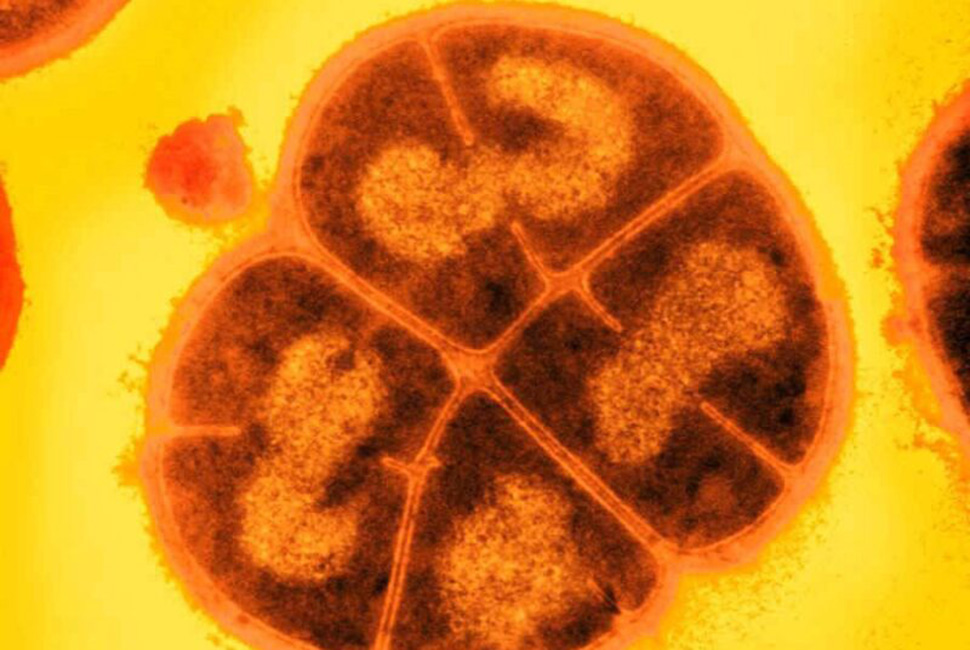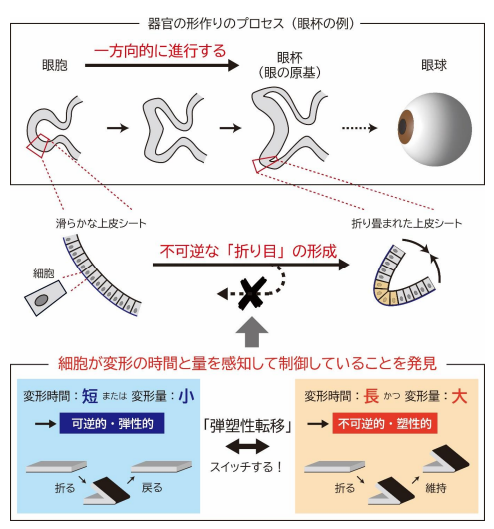2024-12-09 ノースウェスタン大学
 A new study reveals the secret to the antioxidant that allows the bacteria Deinococcus radiodurans to withstand radiation doses 28,000 times greater than what would kill a human.
A new study reveals the secret to the antioxidant that allows the bacteria Deinococcus radiodurans to withstand radiation doses 28,000 times greater than what would kill a human.
<関連情報>
- https://news.northwestern.edu/stories/2024/12/how-conan-the-bacterium-withstands-extreme-radiation/
- https://www.pnas.org/doi/10.1073/pnas.2417389121
Mn2+、合成デカペプチドDP1(DEHGTAVMLK)、オルトリン酸の三元複合体は優れた抗酸化物質である The ternary complex of Mn2+, synthetic decapeptide DP1 (DEHGTAVMLK), and orthophosphate is a superb antioxidant
Hao Yang, Ajay Sharma, Michael J. Daly, and Brian M. Hoffman
Proceedings of the National Academy of Sciences Published:December 12, 2024
DOI:https://doi.org/10.1073/pnas.2417389121
Significance
This study reveals the mechanism for protein radioprotection by the superb Mn-based MDP antioxidant containing Pi and decapeptide DP1, designed through considerations of Deinococcus radiodurans low molecular-weight Mn-antioxidants: The exceptionally active antioxidant in MDP is shown to be a Mn2+ (Pi/DP1) ternary complex, which, protects enzymes from radiation doses far exceeding the capabilities of Mn2+-Pi complexes alone. Substitutionally labile calcium ions coaccumulate with Mn in Mn-dependent organisms, and as an illuminating parallel, 1H NMR of DP1 is used to measure its affinity for diamagnetic Ca2+, whose coordination chemistry parallels that of paramagnetic Mn2+. These findings could unlock new strategies for enhancing cellular oxidative-stress resistance, spur the development of radiation-inactivated whole-cell vaccines, and potentially lead to other medical advances.
Abstract
Mn2+ coordinated by orthophosphate (Pi), metabolites, or peptides acts as a superoxide dismutase (SOD), and these Mn antioxidant complexes are universally accumulated in extremely radiation-resistant cell types across the tree of life. This behavior prompted design of decapeptide DP1 (DEHGTAVMLK) as a Mn2+ ligand, and development of a highly potent Mn2+-antioxidant (MDP) containing [Pi] = 25 mM, and [DP1] = 3 mM, the ratio found in the radioresistant bacterium Deinococcus radiodurans, with [Mn2+] = 1 mM. MDP is an exceptional antioxidant, both in vitro and in vivo, and has reinvigorated the development of radiation-inactivated whole-cell vaccines. This study investigates the nature of the active Mn2+ complex in MDP. We measure the affinity of DP1 for the substitutionally labile Mn2+ ion using isothermal-titration calorimetry (ITC) and use changes in the Mn2+ solution EPR spectrum to determine affinities of Mn2+ for DP1 and for Pi, and to monitor Mn2+ ligation while titrated with the fixed Pi/DP1 ratio of MDP, 25/3, using ENDOR/ESEEM to characterize DP1 ligation to Mn2+. In parallel, 1H NMR of DP1 was used to monitor binding interactions between Pi and DP1, and DP1 binding to the diamagnetic Ca2+. We report: i) DP1 forms an extremely weak, dynamic Mn2+ complex (Ka ≈ 40 M-1) ii) Mn2+ binds Pi much more strongly (Ka ≈ 390 M-1) as shown previously, but iii) DP1 and Pi jointly bind to Mn2+ in MDP to form a ternary Mn2+ (Pi) (DP1) complex with greater formation-constant than Pi alone (Kaapp ≈ 670 M-1). It is this ternary complex that is the superb antioxidant in MDP.


